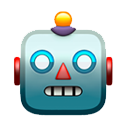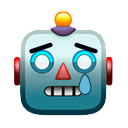
Oh you're a "small team" with "limited resources" that "can't afford accessibility?"
Well at least 25% of people have some form of disability. So at least 25% of any team OR solo dev should have accessibility expertise.
If not, the problem isn't team size but hiring priorities.
Well at least 25% of people have some form of disability. So at least 25% of any team OR solo dev should have accessibility expertise.
If not, the problem isn't team size but hiring priorities.
Even teams of only ONE person should devote 25% of your time to this LEGALLY REQUIRED activity.
If you're not building something to be accessible, you are cutting corners and building garbage.
If you're not building something to be accessible, you are cutting corners and building garbage.
If you have shipped an MVP (minimum viable product) that isn't accessible, I have bad news:
It *isn't* minimally viable.
You've been shipping deficient prototypes and still do.
It *isn't* minimally viable.
You've been shipping deficient prototypes and still do.
Accessibility work happens with priorities: internal training, hiring, and remediation.
The third one is very expensive. Best to start your priorities with one of the other two.
The third one is very expensive. Best to start your priorities with one of the other two.
• • •
Missing some Tweet in this thread? You can try to
force a refresh


